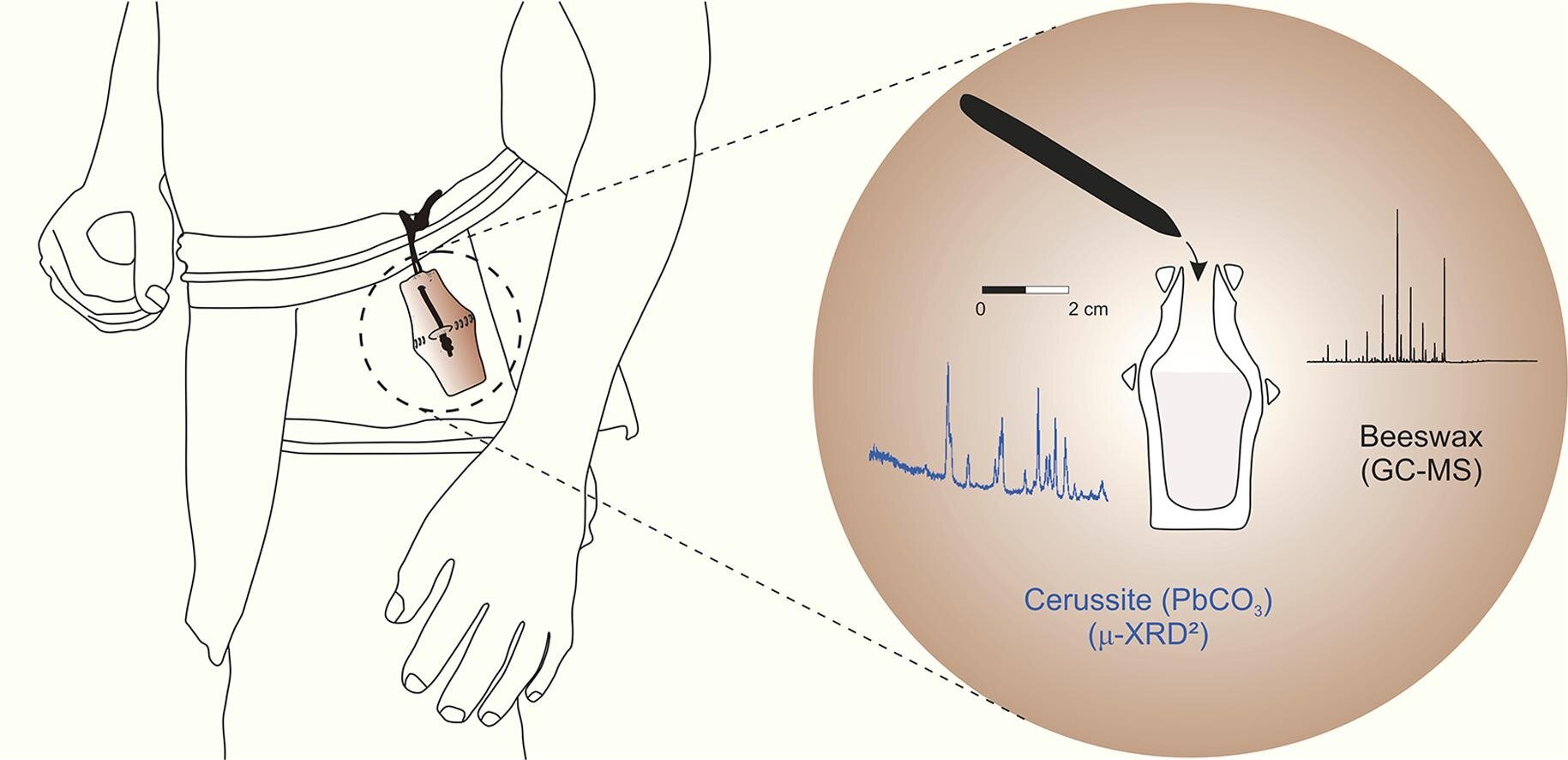A trio of researchers from Slovenia's Institute for the Protection of Cultural Heritage of Slovenia at the Centre for Preventive Archaeology and Eberhard Karls Universität Tübingen, in Germany, has found evidence of the oldest known use of cosmetics at a dig site in the Balkans. In their paper published in the Journal of Archaeological Science: Reports, Bine Kramberger, Christoph Berthold, and Cynthianne Spiteri describe the ceramic bottles that held the cosmetics and what they found inside them.
Back in 2014, team member Bine Kramberger uncovered a small bottle at a dig site in Zgornje Radvanje, Slovenia. Soon thereafter other diggers uncovered similar bottles. Over the next several years, over a hundred of the bottles were discovered in the region. Initial review of the bottles suggested that they were some type of children's toy, or perhaps medicine vials, due to their small size. Also, it was noted that the bottles had holes in their handles, which suggests they would have been strung and hung on the waist or perhaps around the neck. In this new effort, the researchers took a close look inside some of the bottles to learn more about what they might have once held.
Close inspection of over a dozen of the bottles revealed traces of cerussite, which is sometimes known as white lead or carbonite. It has been found in a variety of containers from multiple places around the world throughout history. It was even used in modern paint until it was found to be poisoning children who consumed it. The researchers also note that many of the tiny bottles were found with long thin stone tools nearby possible extraction devices. The team also found small bits of animal fat, beeswax, and plant oils in the bottles; all signs of materials meant for application on the skin.
The bottles have been dated back to a time between 4350 and 4100BC, making them by far the oldest known evidence of cosmetic use in Europe it also puts them farther back in time for cosmetics use than Mesopotamia and Egypt. The bottles are believed to have been created and used by people known as the Lasinja Neolithic hunter-gatherers.




0 Comments